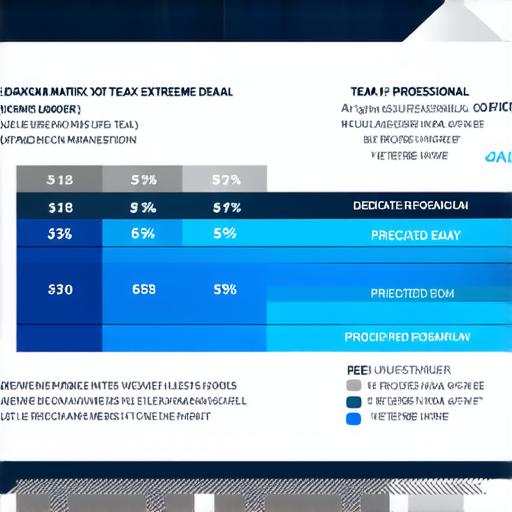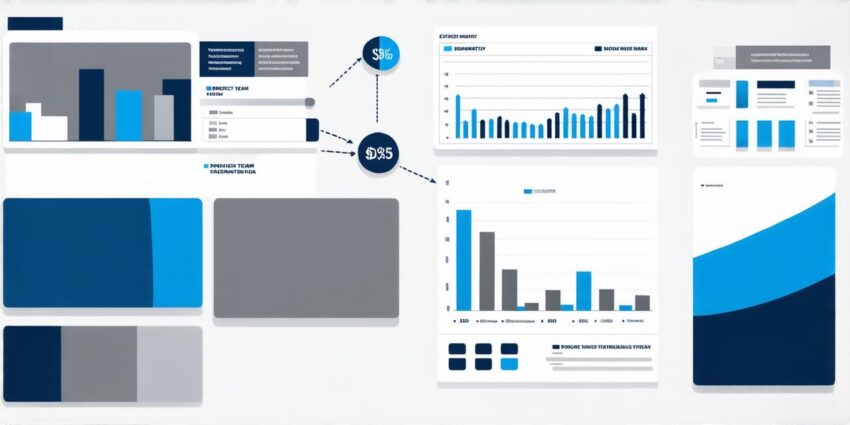
Functional Matrix Approach
vs
Dedicated Team Approach
: Which One is Right for Your Project Management?
When it comes to project management, there are several approaches that teams can take. Two of the most popular are the functional matrix approach and the dedicated team approach. In this article, we will compare these two approaches and discuss their strengths, weaknesses, and potential use cases.
Functional Matrix Approach
The functional matrix approach is a hierarchical structure in which project managers report directly to functional managers who oversee specific areas such as marketing or engineering. This approach allows for clear lines of authority and ensures that projects are aligned with the overall goals and objectives of the organization.
One of the main benefits of the functional matrix approach is that it provides a clear chain of command. This makes it easy for project managers to report progress and issues up the line, and for functional managers to make decisions about project direction and priorities. Additionally, this approach allows for the efficient use of resources, as each functional area can contribute its unique expertise to the project.
However, one potential downside of the functional matrix approach is that it can lead to communication breakdowns between functional areas. This can happen if there is a lack of collaboration or if there are conflicting priorities within different functional areas. Additionally, this approach can be slow to adapt to changes in project direction or priorities, as any changes would require approval from multiple levels of management.
Case Study: Microsoft Office 2016
Microsoft’s development of the Office 2016 suite was a prime example of the functional matrix approach in action. The project was led by the Product Management team, who worked closely with the engineering and design teams to ensure that the product met the needs of users. Each functional area had a clear role in the project, from engineering and design to marketing and sales.
This approach allowed for efficient collaboration between the different functional areas and ensured that the product was aligned with Microsoft’s overall business goals. However, it also led to some communication breakdowns, as different teams had conflicting priorities and there were delays in decision-making due to the multiple layers of management involved.
Dedicated Team Approach
The dedicated team approach is a more flexible structure in which project managers have a greater degree of autonomy and control over their projects. This approach involves creating a cross-functional team with members from different areas, such as engineering, design, marketing, and sales. The goal is to create a self-sufficient team that can make decisions and take action without needing constant approval from management.
One of the main benefits of the dedicated team approach is that it allows for greater flexibility and faster decision-making. This can be especially important in rapidly changing environments where quick action is needed to stay competitive. Additionally, this approach encourages collaboration between functional areas, which can lead to better communication and a more cohesive project team.
However, one potential downside of the dedicated team approach is that it can be difficult to manage. With multiple teams working on different projects, there may be conflicting priorities and resource allocation issues. Additionally, this approach requires a high degree of trust between team members and functional managers, as well as strong leadership skills from project managers.
Case Study: Airbnb’s User Experience Redesign
Airbnb’s redesign of its user experience was a prime example of the dedicated team approach in action. The project was led by a cross-functional team that included members from engineering, design, marketing, and sales. This team worked together to create a new user interface that was more intuitive and user-friendly.
This approach allowed for greater collaboration between functional areas and faster decision-making. However, it also required strong leadership skills from the project manager to keep the team focused and ensure that everyone was working towards the same goals.
Comparing Functional Matrix Approach vs Dedicated Team Approach
When comparing these two approaches, there are several key factors to consider. These include:
- Level of autonomy and control for project managers
- Flexibility in decision-making
- Collaboration between functional areas
- Efficiency of resource allocation
- Speed of decision-making
In general, the dedicated team approach provides greater autonomy and flexibility for project managers, as well as faster decision-making and greater collaboration between functional areas. However, it can be more difficult to manage and may lead to resource allocation issues if not properly managed. The functional matrix approach provides a clear chain of command and ensures efficient use of resources, but can lead to communication breakdowns and slow decision-making due to the multiple layers of management involved.
